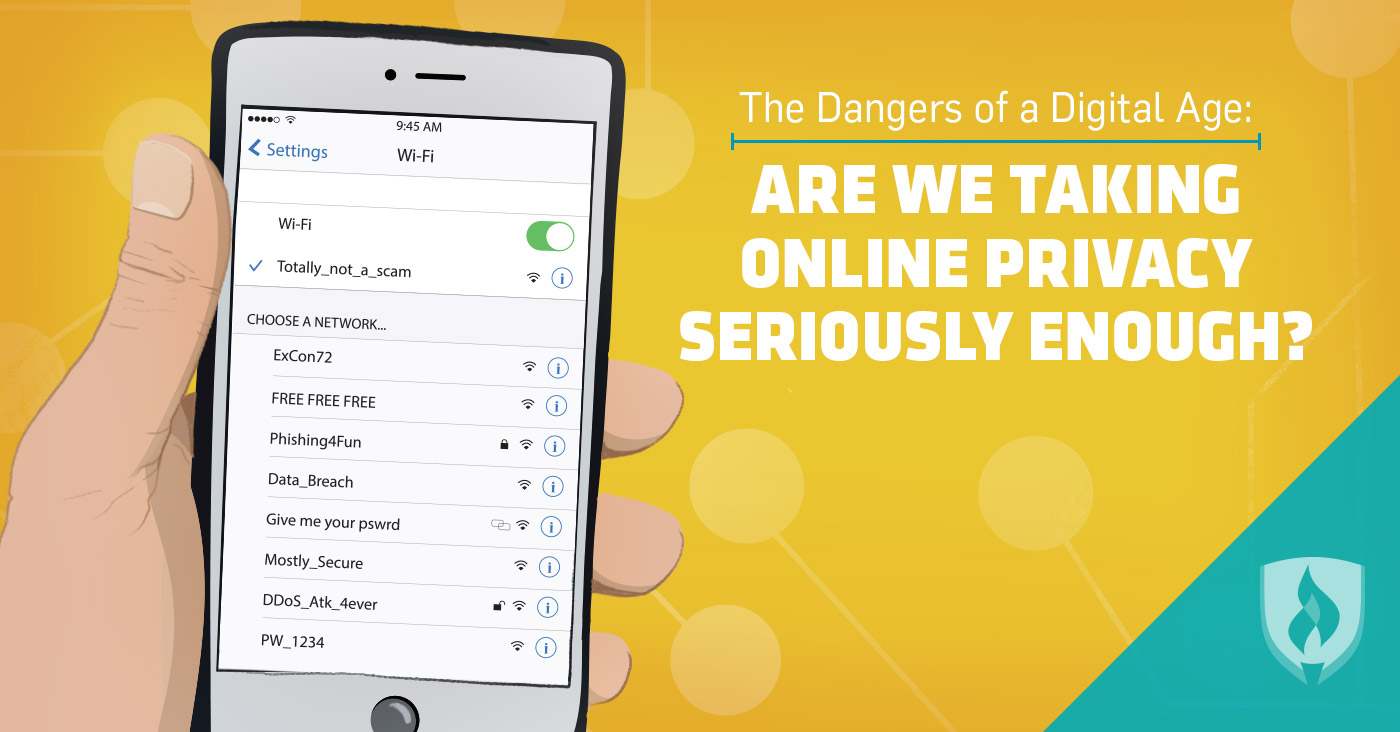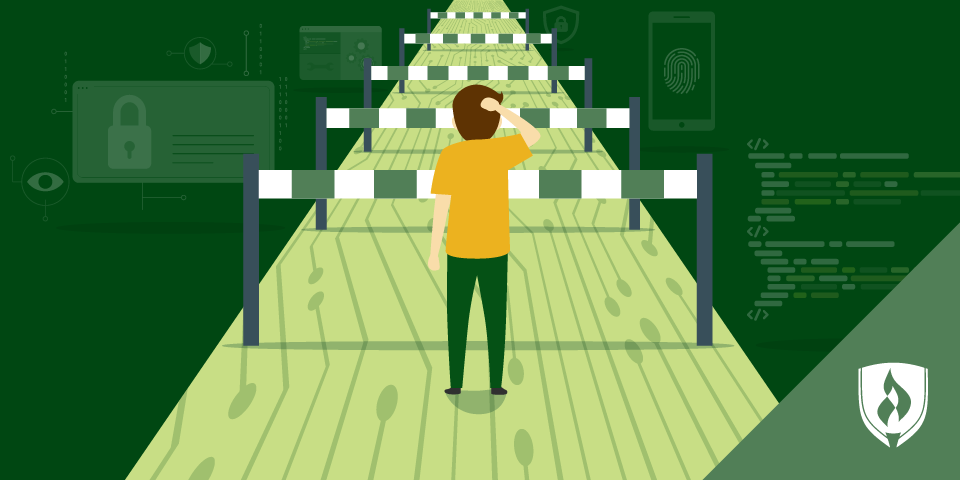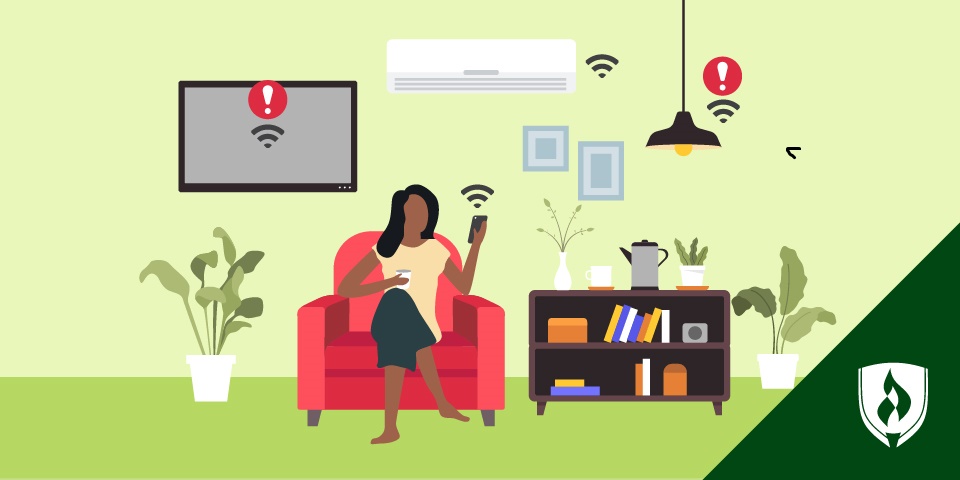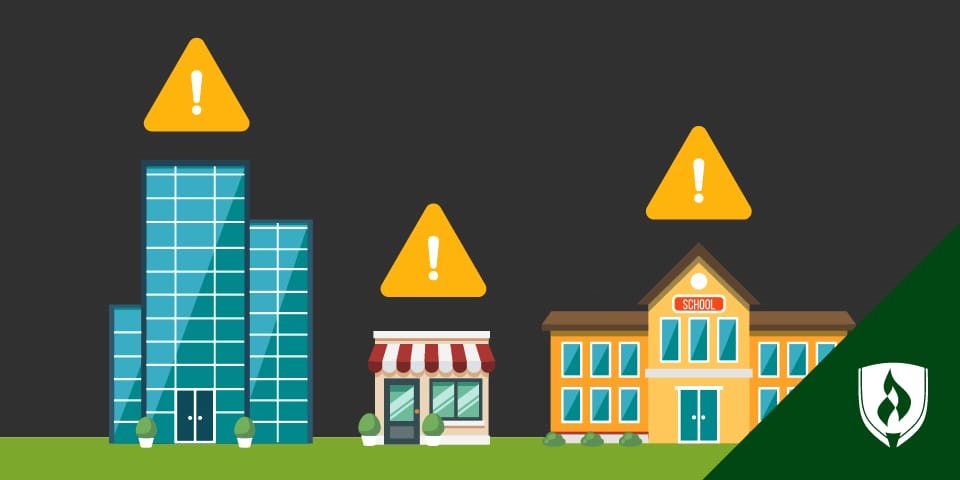The Dangers of a Digital Age: Are We Taking Online Privacy Seriously Enough?
By Jess Scherman on 02/14/2017
Online privacy and information security seem to be hot topics in light of recent high-profile hacking incidents. We’re quickly learning that the information we’ve long considered safe with our favorite retailers, technology platforms and even healthcare facilities is very much at risk.

In light of these incidents, we could assume the precautions the average American is taking to ensure their online privacy would be at an all-time high. But that notion is called into question as research continues to surface, exposing hole after hole in the virtual armor we naively assumed would protect our valued information.
All of this paves the way for crucial questions we should be asking in our rapidly evolving digital age: Are we actually taking online privacy and security as seriously as we think we are? Where are our weak spots? What more can we be doing?
We canvassed a handful of tech experts to help uncover the answers to these critical questions.
Do we take online privacy seriously?
For such a complex question, the answer is overwhelmingly simple. “We definitely do not take online privacy seriously enough,” urges attorney James Goodnow, technology expert and legal commentator with Fennemore Craig P.C. “Or perhaps we don’t take it seriously until our privacy is breached.” He explains that you can still enjoy the conveniences of living in a digital age by investing a little time to protect yourself.
It has become abundantly clear that as much as the average American may be aware of the importance of information security, people too often place personal convenience above privacy online. “Online security is like an analog dial,” explains Jonas Sickler, Marketing Director at ConsumerSafety.org. “On one end we have convenience, on the other end privacy. Finding the balance is going to require constant tweaking, and we may never find that sweet spot.”
Another flaw present in the way we often think about online security is operating under the assumption that, as individuals, we’re too small a target. Tech experts are quick to shut this line of thinking down. “The situation is even worse with individuals who often think they would never become the target for hackers because ‘there isn’t much to steal’ from their computers,” says George Tatar, Founder and CEO of Akruto. “The trends of 2016 show an increasing number of cyber-attacks directed at individuals.”
Today’s hackers are technologically advanced, and they’re getting more and more creative. Tatar illustrates a couple crucial points by referencing the recently announced Yahoo data breach that affected at least half a billion email accounts:
- Hackers can gain access to your security questions and answers and later use this information to further hack your accounts on other services. This can lead to, among other things, complete identity theft.
- Security can be breached with the combination of attacks, social engineering or one simple vulnerability found, which means there is no place that is 100% safe for storing personal data online.
With all of this in mind, what are we—the average American consumers—to do? Aside from becoming information security experts, is there anything we can do to actually protect ourselves online?
“Since we don’t want a rolodex filled with 20-digit passwords, nor do we want to risk financial ruin, a smart middle ground is to take a few precautions to guard our most sensitive information,” Sickler offers.
6 ways you can protect your information online
1. Take password requirements seriously
If you’ve ever found yourself annoyed by a forced password change or the complex guidelines for creating a new password, you’re definitely not alone. But before you roll your eyes and shrug it off as unimportant, consider the words of our tech experts.
“Creating difficult passwords and never using the same password twice are some of the most important practices in preventing online accounts from being compromised,” urges Benjamin Van Pelt, CEO at VPNetworks LLC.
Nathan Barber, digital analyst for seoWorks, also suggests changing your password every three to six months. “Hacking information often takes place over an extended period of time with the hacker using multiple techniques to get into your account,” he explains. “Once they are in, they can control the password and prevent you from accessing it again.”
But sometimes keeping track of multiple ultra-secure passwords can feel like attempting to crack dozens of secret codes all written in different languages. If you’re worried about your ability remember your complex passwords, you might consider using a secure password manager like Dashlane, LastPass, Sticky Password or KeePass to log them for you.
2. Pay attention to system updates
This one is alarmingly simple: Run those system updates. “Technology evolves quickly, and so do the security vulnerabilities that are often hidden unknowingly in the devices we use day-to-day,” Van Pelt explains. “It is important to run regular system updates on your laptop, desktop, mobile smartphone, Wi-Fi router or any other internet-enabled device.”
With each update, technology teams are offering improved software that has filled in any of the holes identified in previous versions. So instead of continually clicking, “Remind me later” when those pesky reminders pop up on your devices, think about your virtual protection and take a few minutes to run the necessary updates as prompted.
3. Watch out for hyperlinks
Sickler reminds users to be wary of links included in the emails they receive as you could unknowingly unpack malware. “This is especially true during the holidays when there are tons of fake invoices and shipping scams,” he explains.
You may think you have the ability to spot a scam from a mile away, but our experts would urge you to think twice. “Most people know that if you receive an unsolicited hyperlink via text message or email, it’s not a good idea click on it. Many hackers know this, too, and they are getting good at disguising links to look like legitimate sources,” Van Pelt explains, adding that it’s not uncommon for hackers to hijack a trusted contact to gain your trust and trick you into clicking an infected link. Be wary of this, and if you are even slightly suspicious, don’t click.
He suggests to instead hover your mouse over the link to examine the target domain and verify its legitimacy. To be 100 percent sure, you can copy the link and paste it into a new browser or verify it with a malware scanner, like VirusTotal.com.
4. Never allow browsers to save your passwords
Nearly every time you create a new account—whether it’s something seemingly simple, like registering with a new online retailer as you fill out your shipping form, or something a bit more high-stakes, like creating an online profile with your new bank—your browser will prompt you to save your log-in credentials.
The convenience of this action is tempting, but it has the potential to yield dangerous results. “The password is then stored in your computer as well as the cloud, and if you were to get hacked, the password information would become available for the hacker to exploit,” Barber offers.
5. Be mindful of the Wi-Fi you’re using
Public Wi-Fi seems to be offered everywhere these days—libraries, cafes and even city buses. While it’s a nice convenience and you can definitely still reap its benefits, be careful about the kind of information you could be exposing while using a public network. “Never enter passwords or make purchases while on public Wi-Fi—you may as well print your credit card number on your shirt,” Sickler says.
“It doesn’t matter how secure your password is,” Van Pelt adds. “If you are connecting over public Wi-Fi networks, your passwords and data are at risk of being stolen by hackers. Checking your personal email or logging into social media or online banking accounts can all lead to your information being compromised if someone with malicious intentions is lurking on that Wi-Fi network.”
He suggests using a VPN (virtual private network) service to create a secure tunnel for your information to pass through, encrypting all data that is sent to and from your device. But not all VPNs are created equal, so check out this list to find a secure option.
6. Remind yourself of the trade-off
Finally, when it seems that all these rules and regulations are starting to get a bit overwhelming, it’s abundantly helpful to remind yourself of the purpose of maintaining a secure online presence. Goodnow reminds consumers that the ramifications of not being proactive with your online security can be far-reaching and financially devastating.
“Ask yourself this next time you’re agreeing to purchase on online product or participate in a service: Is that simple password that saves two milliseconds over a longer, more complicated one worth hours and hours of time wasted and potentially thousands of dollars lost?”
Take charge of your own security
With high profile security breaches popping up in our news headlines more and more frequently, it’s clear that our private information is at greater risk than we want to admit. While the establishments and corporations with whom we share our data need to do their parts by actively improving their information security, we each have to proactively protect our own data.
If you’re intrigued by the topic of information security and you’re feeling more than ready to take matters into your own hands, you would likely thrive in making an exciting career out of analyzing and improving upon online security! Learn more about your options by visiting our article, 5 Fascinating Infosec Jobs that Help Combat Cybercrime.
RELATED ARTICLES:




